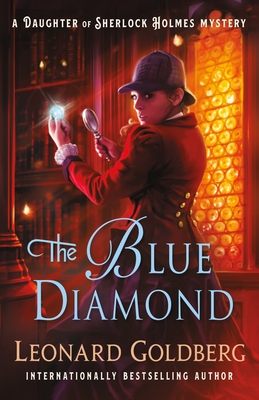 The Blue Diamond (The Daughter of Sherlock Holmes Mysteries #6) by Leonard Goldberg
The Blue Diamond (The Daughter of Sherlock Holmes Mysteries #6) by Leonard Goldberg Format: eARC
Source: supplied by publisher via Edelweiss
Formats available: hardcover, ebook, audiobook
Genres: historical fiction, historical mystery, mystery, World War I
Series: Daughter of Sherlock Holmes #6
Pages: 336
Published by Minotaur Books on June 14, 2022
Purchasing Info: Author's Website, Publisher's Website, Amazon, Barnes & Noble, Kobo, Bookshop.org, Better World Books
Goodreads
The fate of the allied forces lies in the hands of Joanna and the Watsons in the next Daughter of Sherlock Holmes mystery from USA Today bestselling author Leonard Goldberg.During a critical stage in World War One, the Governor-General of South Africa journeys to London for a meeting of The Imperial War Conference. Days prior to the conference, the Governor-General is scheduled to have an audience at Buckingham Palace at which time a most precious blue diamond will be presented to King Edward as a symbolic gesture of the colonies’ resolute and never-ending allegiance to England.
The flawless blue diamond, with its magnificent luster, weighs nearly 3000 carats which renders it one of the world’s largest and most valuable gems. On the Governor-General’s arrival, he is ensconced at the fashionable Windsor Hotel under the tightest security, with his entire entourage and formidable security team occupying the entire penthouse floor. All entrances and exits are locked down and closely guarded, and no one is allowed entrance after 6 PM.
Despite the extreme precautions, the famous diamond is stolen from the Governor-General’s suite in the middle of the night, with no clues left behind. With Scotland Yard baffled, Joanna and the Watsons are called in to investigate the theft and it becomes clear that the crime is not simply the work of a master thief, but one that could greatly aid the Germans and turn the tide of war in their favor. Time is of the essence and the blue diamond must be recovered before it begins its travels which could cause irreparable damage to the allied war plans.
My Review:
 Up until this entry of this series featuring Joanna (Holmes) Blalock Watson, the Daughter of Sherlock Holmes of the series title, it has very much seemed as if the books in the series have been as much, or even more, in dialogue with Sherlock Holmes himself and the canon of the elder Dr. Watson’s accounts as they were about the investigations conducted in the series’ present by Joanna Watson with the able assistance of her husband, the younger Dr. Watson, and his esteemed father.
Up until this entry of this series featuring Joanna (Holmes) Blalock Watson, the Daughter of Sherlock Holmes of the series title, it has very much seemed as if the books in the series have been as much, or even more, in dialogue with Sherlock Holmes himself and the canon of the elder Dr. Watson’s accounts as they were about the investigations conducted in the series’ present by Joanna Watson with the able assistance of her husband, the younger Dr. Watson, and his esteemed father.
But in this entry in the series, even though it does call back to the codebreaking in her father’s Adventure of the Dancing Men, is finally dealing directly with the important events of her day rather than her father’s famous cases.
That is because The Blue Diamond takes place in 1916, and the criminal activities that Joanna and the Watsons are called in to investigate in London are directly related to the war taking place in Europe – even if that is only a suspicion when they are first called in.
At first, it looks like a series of very high-end thefts occurring at equally high-end hotels. The first prize the clearly expert thieves took was a rare Ming vase worth over 100,000 pounds. The second was an even rarer – and much more highly prized – blue diamond. Hence the title of the book.
But the diamond was stolen from the suite of the Governor-General of South Africa – making the whole mess a political nightmare. Even so, the theft of a rare vase and an even rarer diamond are still property crimes – even if the value of the items represented riches beyond the dreams of avarice – if not beyond the dreams of high-end thieves.
The third item stolen shifted the entire investigation from mere grand theft to treason when top secret papers were extracted from a visiting French Minister’s suite. Those papers, which contained top secret plans for a joint operation between the British and the French designed to draw the German army into a trap and then break them in a pincer movement, elevated the crime to one that would get the perpetrators hung – if Joanna and the Watsons can figure out who they are.
And as much as Scotland Yard wanted Joanna and the Watsons on the original case, MI5 was even more eager to have them discover not just whodunnit, but how and why and especially whether or not those plans had been relayed to the enemy.
The tide of the war depended on those answers. It really, truly did.
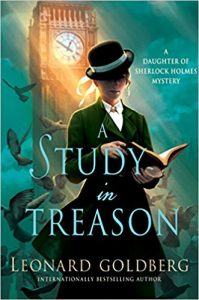 Escape Rating B: This series always gives me mixed feelings. Probably because at least within the confines of my own head, it is in dialogue with two other series (Mary Russell and Lady Sherlock) that re-work Holmes and each treats the Great Detective entirely differently. (If anyone knows of a story or even fanfiction that puts Joanna, Charlotte and Mary in the same room for what would be an utterly fascinating conversation please let me know!)
Escape Rating B: This series always gives me mixed feelings. Probably because at least within the confines of my own head, it is in dialogue with two other series (Mary Russell and Lady Sherlock) that re-work Holmes and each treats the Great Detective entirely differently. (If anyone knows of a story or even fanfiction that puts Joanna, Charlotte and Mary in the same room for what would be an utterly fascinating conversation please let me know!)
Only the Russell series has fully traveled beyond the original canon by virtue of having Sherlock outlive it. Lady Sherlock is still working her way through it. This is the first case of Joanna’s where she is dealing fully with her own contemporary circumstances and not her father’s.
Rather than being rooted in Sherlock Holmes’ old case, this one is rooted in what we now call history. It’s 1916, the Great War is creating great casualties along with victories that seem like defeats. The U.S. has not yet entered the war, and Germany seems unstoppable. The situation is grim. Those plans have the potential to change the tide of the war – but only if the Germans don’t see them (This eventually happened, the plans referenced in the story were carried out at the Battle of Amiens.)
At first, there are few clues beyond the obvious, that stealing the plans benefits the German High Command. If the plans reach Berlin it gives the enemy knowledge of future military strategy. It has the potential to demoralize the Allies. The uncertainty about whether the plans have been seen and/or tampered with throws up confusion and doubt.
While Germany’s motives are obvious, there don’t seem to be any German agents involved. Instead it all circles back to the South African Governor-General and his entourage. South Africa is a Dominion of the British Empire – an ally. And that’s where the case gets more convoluted.
As Joanna becomes more certain that the thefts were an inside job, the reasons for those thefts becomes that much more elusive. It’s only as the noose tightens around 221B Baker Street that Joanna is finally able to determine who is holding the rope – and why.
There are things about this series that I really like, particularly the portrayal of Dr. Watson Sr. as an intelligent man and a dedicated physician who misses his old friend and finds delight and purpose in helping his friend’s daughter and his own son continue in their footsteps. He’s delightful and he feels both real and right as a character. That he’s well into his 80s at this point in the series and has a heart condition makes me sad. He can’t live forever and there are signs that his time is coming.
I want to say that I find Joanna a bit odd – but she comes by that honestly, considering who her father was. Or does she? That, for me, is the greatest puzzle of the entire series so far, as Joanna seems to have every single one of her father’s habits, quirks and eccentricities to the point where she can seem to be a caricature of a man she never met. That she might have inherited his genius would be entirely possible – but not the whole kit and kaboodle of his personality in all its extremities. Rather than ringing true, this particular bell is ringing cracked.
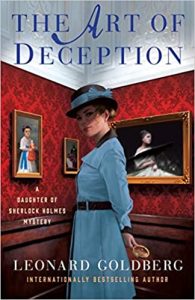 The case she has to solve here is every bit as contrived and convoluted as any that her father faced. But at least this one is hers, born out of the war the world is facing in her time and not his. This feels like a step forward for the series so I’m glad to see it.
The case she has to solve here is every bit as contrived and convoluted as any that her father faced. But at least this one is hers, born out of the war the world is facing in her time and not his. This feels like a step forward for the series so I’m glad to see it.
In spite of those quibbles, and all the ways in which this series drives me crazy, I know I’ll be back for the next book in the series. I never can resist a Holmes story.

 Under Lock & Skeleton Key (Secret Staircase Mystery, #1) by
Under Lock & Skeleton Key (Secret Staircase Mystery, #1) by  It’s only once Tempest is able to pull a tiny thread of one of the many tangled threads in this case – in the Locked Room Library no less! – that she is finally able to tease out a solution. Not just to this convoluted case – but to the question that has been plaguing her since the day she came home. The question about what’s next for Tempest. And in working towards a resolution to the mystery, she finally finds her answer.
It’s only once Tempest is able to pull a tiny thread of one of the many tangled threads in this case – in the Locked Room Library no less! – that she is finally able to tease out a solution. Not just to this convoluted case – but to the question that has been plaguing her since the day she came home. The question about what’s next for Tempest. And in working towards a resolution to the mystery, she finally finds her answer.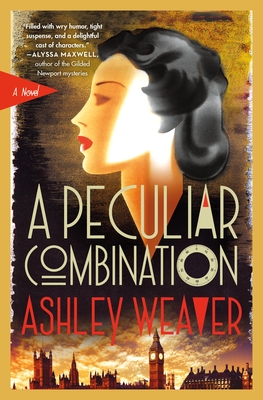 A Peculiar Combination (Electra McDonnell, #1) by
A Peculiar Combination (Electra McDonnell, #1) by  Returning to Major Ramsey, the man with both a stick and his head up his fundament, there is actually a second “peculiar combination” in this story. A romantic triangle – if that’s what it eventually turns out to be as the series progresses. Ramsay may be romantically interested in Ellie – there certainly are hints in that direction. Ellie is at least attracted to Ramsay, as he’s more than handsome enough, but she’s wary of his imperious manner and his upper-crust background. Meanwhile, there’s another man vying for Ellie’s heart, a childhood friend who is, as the saying goes, no better than he ought to be. But then, neither is Ellie. I hope that this conundrum is eventually resolved with as deft a hand as the spy case is wrapped up in this first book in the series, because as much as I’ve loved the adventure and the misdirection so far, I would be even happier with this story without the potentially messy romantic entanglements. YMMV
Returning to Major Ramsey, the man with both a stick and his head up his fundament, there is actually a second “peculiar combination” in this story. A romantic triangle – if that’s what it eventually turns out to be as the series progresses. Ramsay may be romantically interested in Ellie – there certainly are hints in that direction. Ellie is at least attracted to Ramsay, as he’s more than handsome enough, but she’s wary of his imperious manner and his upper-crust background. Meanwhile, there’s another man vying for Ellie’s heart, a childhood friend who is, as the saying goes, no better than he ought to be. But then, neither is Ellie. I hope that this conundrum is eventually resolved with as deft a hand as the spy case is wrapped up in this first book in the series, because as much as I’ve loved the adventure and the misdirection so far, I would be even happier with this story without the potentially messy romantic entanglements. YMMV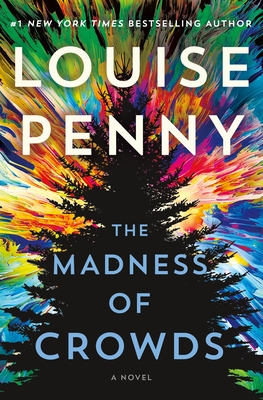 The Madness of Crowds (Chief Inspector Armand Gamache, #17) by
The Madness of Crowds (Chief Inspector Armand Gamache, #17) by 


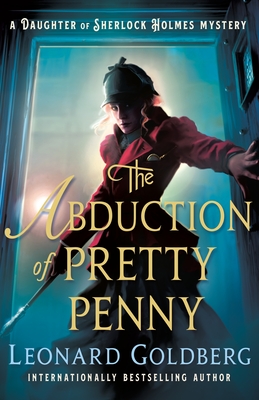 The Abduction of Pretty Penny (Daughter of Sherlock Holmes Mystery, #5) by
The Abduction of Pretty Penny (Daughter of Sherlock Holmes Mystery, #5) by 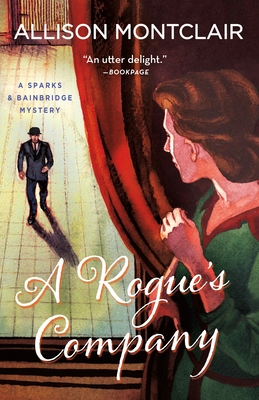 A Rogue's Company (Sparks & Bainbridge Mystery, #3) by
A Rogue's Company (Sparks & Bainbridge Mystery, #3) by 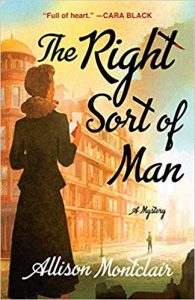 I’ve just realized that the title is a pun – or a spoiler, take your pick – on multiple levels. Iris Sparks, co-owner of the Right Sort Marriage Bureau, is keeping company with Archie Spelling, a known gangster. Quite willingly and fairly often.
I’ve just realized that the title is a pun – or a spoiler, take your pick – on multiple levels. Iris Sparks, co-owner of the Right Sort Marriage Bureau, is keeping company with Archie Spelling, a known gangster. Quite willingly and fairly often.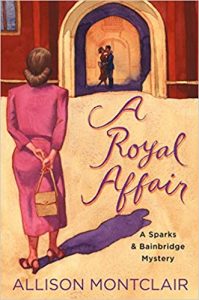 Escape Rating B+: I picked this up because I loved the first two books in this series,
Escape Rating B+: I picked this up because I loved the first two books in this series, 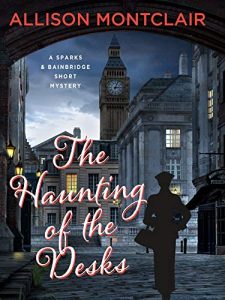 (Speaking of comfort, my soapbox is apparently a bit too comfortable. Moving right along AGAIN…)
(Speaking of comfort, my soapbox is apparently a bit too comfortable. Moving right along AGAIN…) The Stills (Kinship #3) by
The Stills (Kinship #3) by  I picked up The Stills for two reasons. One, because I read the second book in the
I picked up The Stills for two reasons. One, because I read the second book in the  I also liked that Lily might be developing a romantic relationship, but that she is taking it very, very slowly, is cognizant of everything that is at risk both personally and professionally, and is very careful about balancing the professional life that she loves – even though she’s not supposed to even have it – with the possibility of falling in love again. Those hesitant thoughts, the stop and start of possibility versus caution, feel very real.
I also liked that Lily might be developing a romantic relationship, but that she is taking it very, very slowly, is cognizant of everything that is at risk both personally and professionally, and is very careful about balancing the professional life that she loves – even though she’s not supposed to even have it – with the possibility of falling in love again. Those hesitant thoughts, the stop and start of possibility versus caution, feel very real.
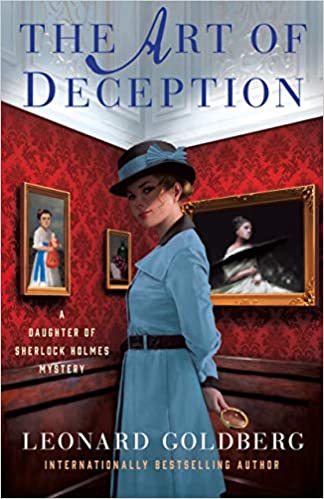 The Art of Deception (The Daughter of Sherlock Holmes Mysteries #4) by
The Art of Deception (The Daughter of Sherlock Holmes Mysteries #4) by  Part of the twist in the case is that it seems like the perpetrators are obvious fairly early on. Then they aren’t. And then they are again. There’s also a hidden criminal but that person’s participation in the crimes is even more obvious – not because they’ve done anything obviously wrong, but because they’re so obviously slimy. The bigger twist was the reason for the crimes. There is a lot of fascinating information – and even more contentious opinion – running through the whole story when it comes to Renaissance painting as well as the restoration and forgery of the same.
Part of the twist in the case is that it seems like the perpetrators are obvious fairly early on. Then they aren’t. And then they are again. There’s also a hidden criminal but that person’s participation in the crimes is even more obvious – not because they’ve done anything obviously wrong, but because they’re so obviously slimy. The bigger twist was the reason for the crimes. There is a lot of fascinating information – and even more contentious opinion – running through the whole story when it comes to Renaissance painting as well as the restoration and forgery of the same. All the Devils Are Here (Chief Inspector Armand Gamache, #16) by
All the Devils Are Here (Chief Inspector Armand Gamache, #16) by  Escape Rating A++: This is one of those reviews where I just want to squee all over the page. Which might adequately express that I LOVED THIS BOOK VERY MUCH, but isn’t exactly informative as to why you should love this series and this book too.
Escape Rating A++: This is one of those reviews where I just want to squee all over the page. Which might adequately express that I LOVED THIS BOOK VERY MUCH, but isn’t exactly informative as to why you should love this series and this book too.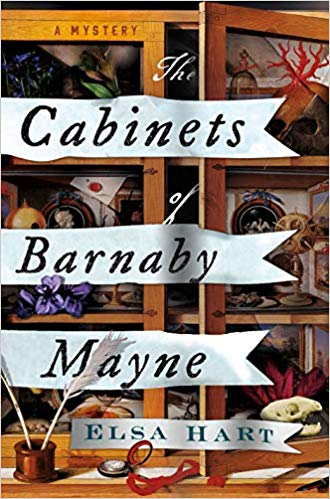 The Cabinets of Barnaby Mayne by
The Cabinets of Barnaby Mayne by